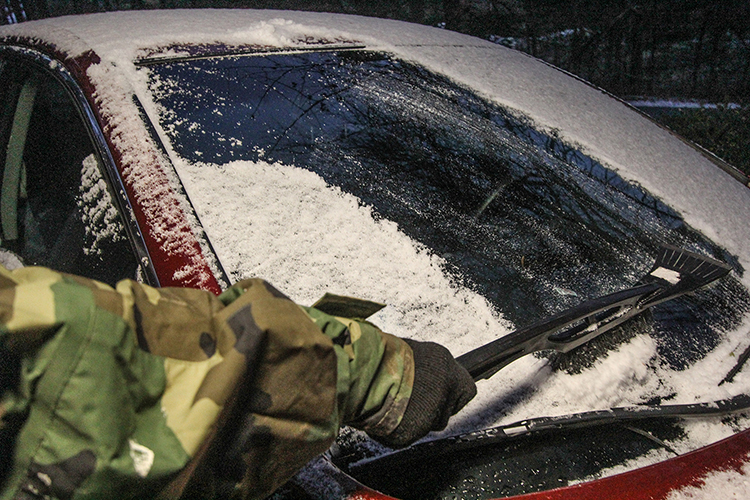Getting around during the winter months in New England can be challenging for newcomers and natives alike. Consequently, the 66th Air Base Group Safety Office offers the Hanscom community these tips for navigating winter travel safely.
Driving Tips
- Reduce driving speed as weather conditions dictate.
- Increase following distances between your vehicle and surrounding cars.
- Keep all windows completely clear. Make sure all lights are free of snow and ice.
- Make speed and directional changes gradually -- avoid sudden, jerky movements.
- Get the "feel" of the road when you begin driving.
- The wheels must be turning for a driver to have steering control. Those who don't have ABS brakes should pump the brakes instead of applying even pressure in icy or snowy conditions.
- Do not use cruise control in snow and ice conditions.
- Watch for danger spots ahead. This includes other vehicles that may suddenly lose control.
- Keep in mind that temperature affects traction. Ice is most slippery near the freezing point. Bridges and shady spots tend to ice over first.
- When going uphill, apply enough power to maintain speed but not enough to cause the wheels to spin.
- Pay close attention to weather forecasts and law enforcement advisories.
- Pay attention to bridges and other areas where wind can pass over the roadway, as black ice can form more readily.
- Pay attention to bridges and other areas where wind can pass over the roadway, as black ice can form more readily.
- Utilize a lower gear when starting off in snow to avoid tire spin.

Blizzards
"The key to safe winter driving is using good common sense," said Chris Herrmann, 66th Air Base Group Safety director. "Sometimes people panic or don't use enough caution when traveling in bad weather and that's when problems occur.”
He added that while any snow event can be troublesome, during blizzards is often when the most severe winter weather conditions happen.
"Blizzards are perhaps the worst of all possible conditions for driving,” said Herrmann. “A driver can be faced with a rapid drop in temperature, limited visibility, slippery roads, drifting snow and difficulty in steering.”
Because of this, Herrmann suggests that people not drive during these conditions. If absolutely necessary, stay tuned to a local radio station for updates on the severe weather.
For travelers who find themselves stranded in a blizzard, keep in mind the following precautions:
- Do not panic. Stay in the car so you can be found more easily.
- Keep a window open slightly on the side opposite of the wind direction for fresh air. Freezing, wet snow can completely seal out oxygen.
- Be aware of carbon monoxide. Run the engine and heater sparingly and only with a window open for ventilation. Periodically, check to ensure snow has not blocked the exhaust pipe.
- Do not remain in one position. Clap your hands and move your arms and legs vigorously from time to time.
- Use your emergency flashers to make your vehicle more visible to working crews. Turn on your dome light at night.
- If more than one person is in the vehicle, do not all sleep at one time. Take turns keeping watch.
- Beware of overexertion and overexposure.
- Keep your gas tank at least half full. This will ensure you have gas to keep the motor running if you get stranded.
Be Prepared
"Being prepared for winter conditions is an absolute necessity,” Herrmann said. “It could save your life if you have to spend some unexpected time outside if your car won't start or you get in an accident or stranded along the road.”
As part of that preparation, safety officials suggest keeping the following items in the vehicle during the winter months:
- Complete change of clothes for the driver and passengers.
- Gloves, mittens and hats that cover heads and ears are also important.
- High calorie foods and water can come in handy when trying to stay warm.
- When traveling long distances with young children, be sure to include extra diapers and other supplies that might be needed.
Other items that should be kept in the car include candles, a flashlight, matches, can opener, cell phone with charger, regular medication, an auxiliary cab heater, blankets, water separator and additives for fuel, an air drying system, kitty litter for traction, starting fluid, engine or coolant heaters and lock lube.
For more information on winter driving, visit the CAC-enabled Safety SharePoint site at https://usaf.dps.mil/teams/12410/SitePages/Home.aspx.
Hanscom personnel may also call the safety office at 781-225-7233 (SAFE), or the on-call 24/7 line at 781-953-3432.
(Updated November 2023)